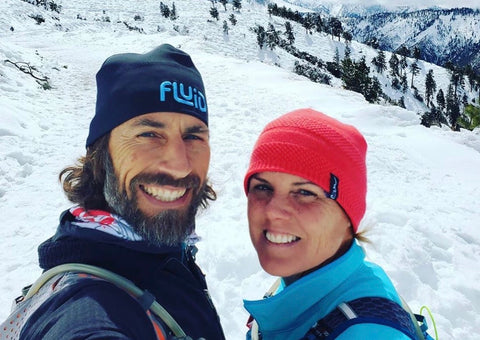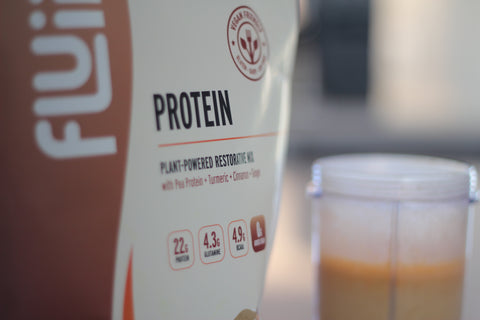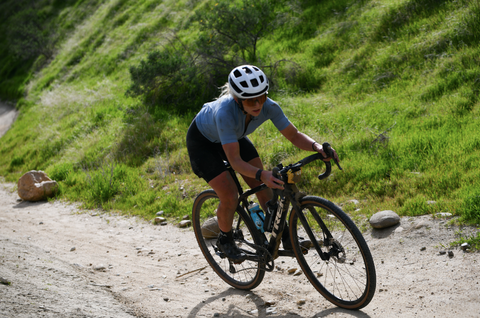1. Hydrate (yes even when it’s cold!)
Many times athletes forget to drink fluids when it's cold out. Athletes tend to feel less thirsty and assume they sweat less in the cold, therefore they might think they do not need to be as diligent with their hydration strategies. While there might be slightly less fluid loss from sweat compared to a 100 degree summer day, hydration is still vital to health and performance during winter months. Remember to maintain hydration habits even when you may not feel like it! A good place to start is to drink at least 1/2-1 bottles of fluids per hour of training (8-12 oz). Daily hydration is important to remember as well, aim for at least half your body weight in fluid ounces per day. Fluid Tactical Electrolyte Drink Mix and Tablets are a great option for daily hydration and Fluid Performance for intra-workout hydration.
2. Dress smart
Layering up is important to stay warm and give yourself options when you start to heat up during training and avoid heavy sweating. Look for items that are moisture wicking to avoid sweat causing an increased cooling effect especially on cold windy days. High quality gloves and socks will be your best friend when heading out on cold days. Keeping extremities warm will make a huge difference in overall comfort and body temperature regulation.
3. Wear bright colors and consider lights with shorter days
Whether running, riding, or doing another outdoor activity, being seen by motorists is important especially on stormy, dark days. If training in the late afternoon and evenings consider having lights on your equipment or a headlamp to make sure you are seen but also to increase your visibility for dangerous terrains including ice and mud.
4. Keep your workout fuel warm
Consuming warm and hot fluids during exercise will avoid the decrease in core body temperature caused by drinking cold beverages. Fluid Performance can be prepared hot or warm and still maintains a great flavor! If heading out for long training, consider using insulated bottles to maintain warmth for an extended period of time.
5. Warm Up inside if possible
If possible, begin your workout indoors to increase body temperature prior to entering the cold. For example, if heading out for a bike ride, try hopping on an indoor trainer and slowly spinning for 10-15 minutes before heading out. If going for a run, try a dynamic stretching or plyometric routine before leaving. This can help mitigate the shock of the cold when beginning a workout and decrease the physical stress of adapting to the cold as you begin training. The important thing here is to make sure you do not begin to sweat prior to leaving the house. As soon as your sweat hits the cold air it will cause an increased cooling effect, making it harder to maintain body temperature once outside thus negating the positive effects of warming up inside.
6. Have warm recovery nutrition on deck
One of the best thing about being outside in the cold is coming home to a cozy mug of your favorite hot beverage. Recovery nutrition can be just that! Fluid Recovery mixes can be made into hot chocolate (including mint hot chocolate with our seasonal Mint Chocolate Recovery) or a warm cinnamon vanilla beverage. Just mix Fluid recovery powder into a mug of hot water or milk to maximize the comfort and joy of recovery nutrition.
7. Pay attention to Vitamin D
Many athletes get their Vitamin D from the sun. However, in the winter when the sun is out less and maybe you aren’t training outdoors as much, it can be challenging to get adequate vitamin D. Consider adding a supplement or increasing Vitamin D rich foods such as fortified milks and/or cereal, egg yolks, and salmon. Vitamin D is important for bone health, decreasing inflammation and supporting immune function.



